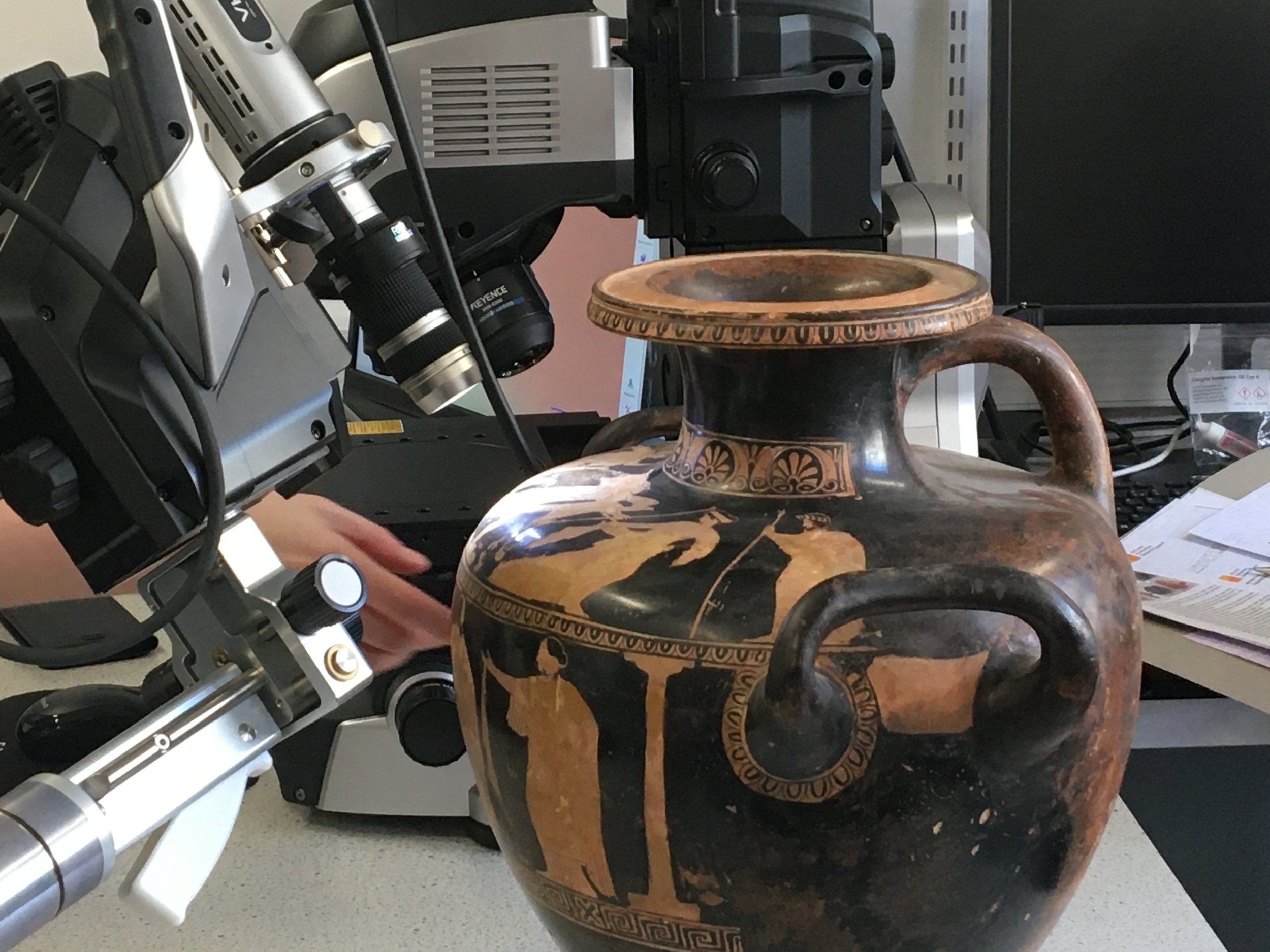
About the Project
Shining a Light on Women and Children in Antiquity is a partnership project funded by the Arts and Humanities Research Council (AHRC). It is an interdisciplinary collaboration between Newcastle University, the Great North Museum: Hancock, and local schools.
The project focuses on a range of objects from the Shefton Collection of Greek Archaeology, which can tell us about the lives of women and children in ancient Greece. Our understanding of these objects has been greatly enhanced by scientific evaluation carried out by the Newcastle Material Culture Analytical Suite, based in the University. The project teams used the results of the scientific analyses to develop a series of workshops delivered to primary schools and women’s groups.
A major element of this project is an attempt to understand more about the lives of children in ancient Greece from objects associated with them. These include two small clay models of a tortoise and a boar, which may well have been children’s toys in antiquity. In addition we looked at a clay feeding cup used, in all likelihood, by a small child to drink from. A fourth object connected to children’s lives was a chous, a small wine jug, often associated with children and religious ritual.
Laboratory Work
The Shefton Collection boar, tortoise, chous and feeding cup were analysed in a CT scanner, which allowed us to see inside these objects. The results provided us with new knowledge about the objects, especially insights into how they were made.
The project used the facilities in the Newcastle Material Culture Analytical Suite to carry out a range of different types of analysis. These included x-ray imaging and using microscopes to gain a deeper understanding of the objects.
One of the potter’s fingerprints, where the clay had been pressed into the mould, was visible on the scan.
When the feeding cup was placed in the scanner we were able to see how the distinctive strainer was made.
An additional benefit of scanning these objects was that we were able to use the data from the scans to make 3D prints. We were interested in testing the impact of these 3D prints on school children. It allowed them to get a better sense of individual objects, without having to put the real objects at risk through repeated handling by school groups.
CT scanner
An examination of the interior of the boar revealed how it had been manufactured in a mould.
The potter had clearly used a sharp instrument to poke holes into the clay, before it was fired in the kiln, to create the strainer. The waste from this process was visible in the scan: small pellets of clay lie inside the bottom of the cup. While the strainer was probably intended to avoid any bits getting into the liquid in the cup it was not seen as a problem to have clay fragments rattling about inside.










